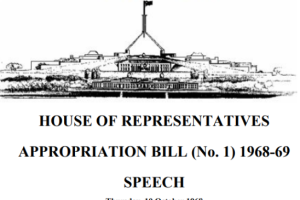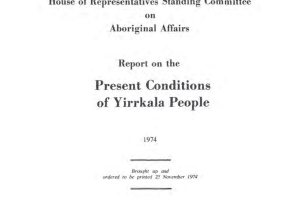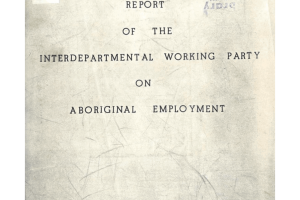
Artefacts about Unemployment Benefit
Due to a lack of DSS's presence in Western Australia, the state Department of Native Welfare published a pamphlet about payments Aboriginal people could get, reiterating earlier advice to apply through state-based officers.
Member of Parliament, Frederick Collard, pointed out the issues Aboriginal people in Western Australia faced in accessing government services, calling for a ‘fairer deal’.
Aboriginal workers walked off the Victoria River Downs cattle station in 1972 over pay and working conditions. The government was hesitant to pay Unemployment Benefit even though they passed the work test.
The Standing Committee on Aboriginal Affairs questioned a high-level DSS official in 1973 and 1975. They touched on a range of issues relevant to Aboriginal people receiving payments.
A 1974 report about the impacts of bauxite mining on the Yirrkala community in Arnhem Land recommended against direct government payments for the community, reflecting a change from advice in a 1963 report.
Researchers interviewed Aboriginal families in Adelaide about their housing, income, government payments and work as part of a wider study into poverty in Australia.
To address high unemployment rates, the government looked into ways to increase employment in Aboriginal communities. They considered introducing community-based work programs, but also looked into ways to make it harder to get Unemployment Benefit.
During discussions in the House of Representatives, Opposition Leader Gough Whitlam criticised the government of the day over proposed changes to procedures affecting Aboriginal people's access to Unemployment Benefit.







